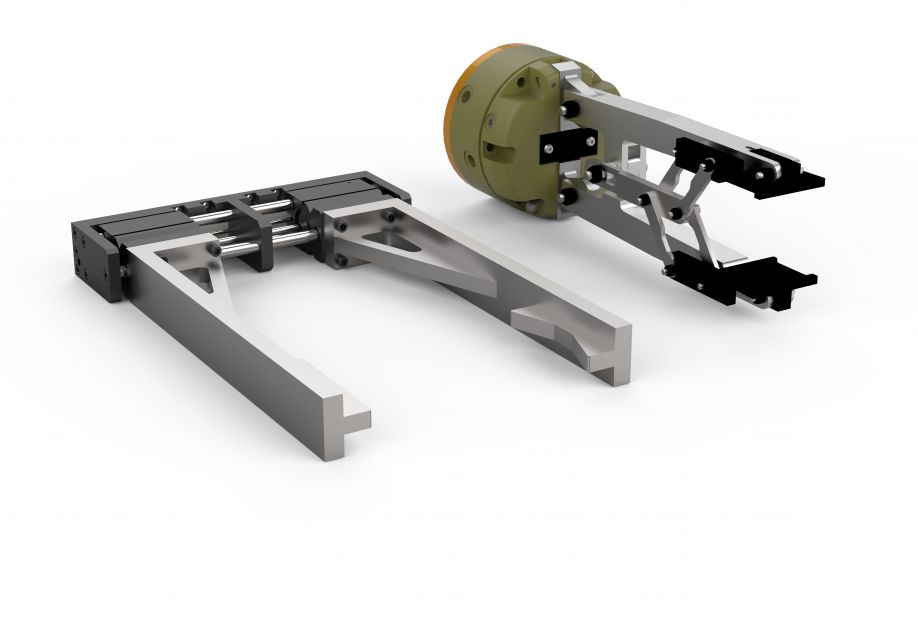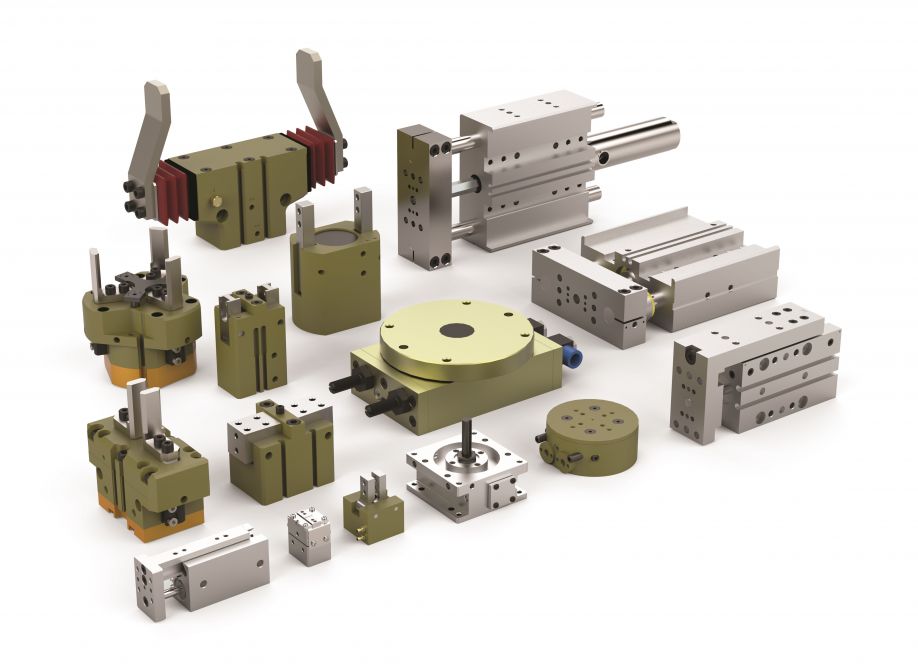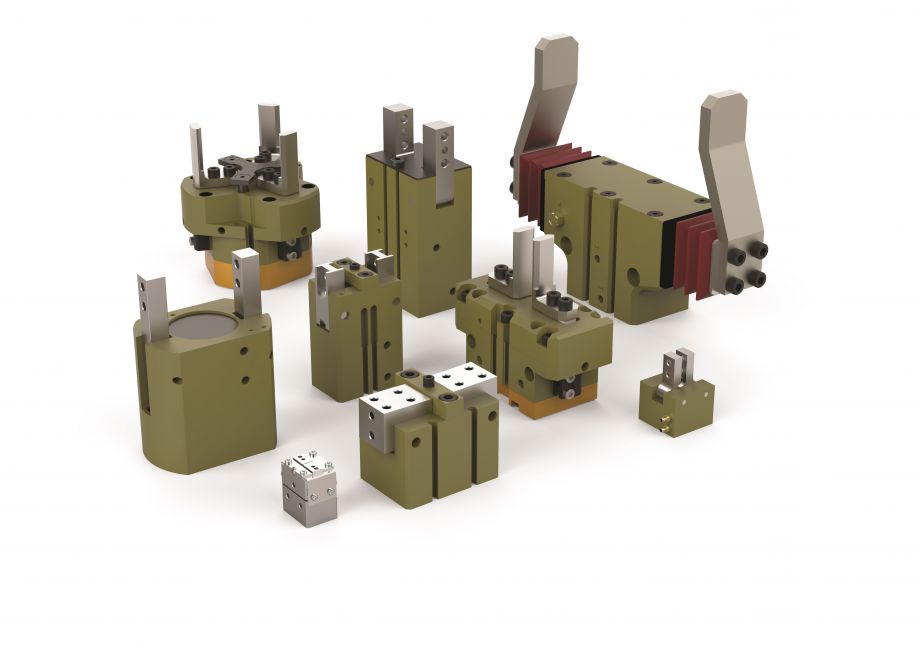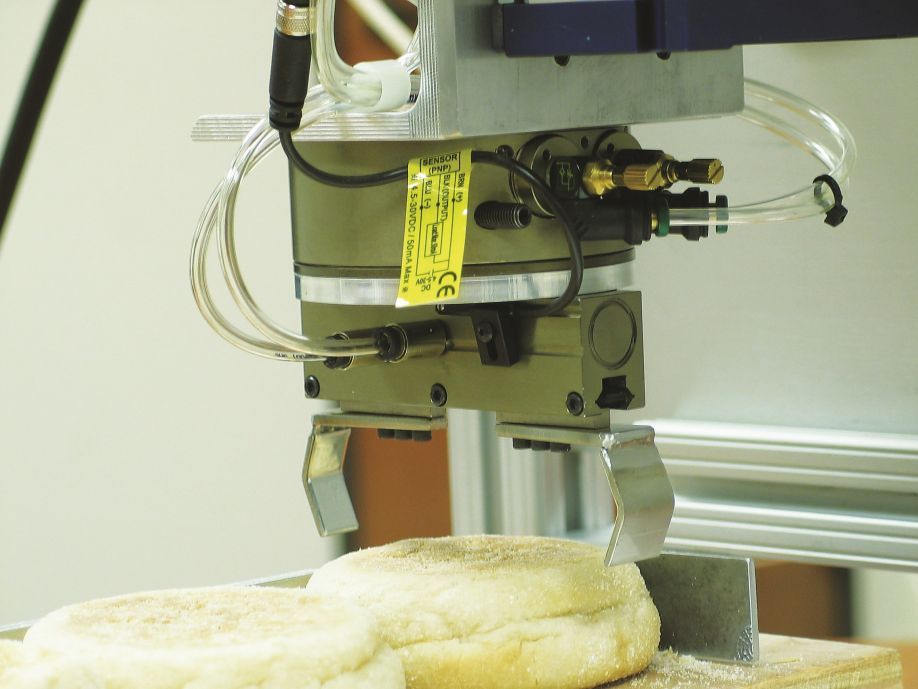The array of gripper choices in the automotive, pharmaceutical and electronics and industries for pick-and-place automation systems are numerous. The many gripper styles – all of which have their own size, method of operation, and level of human interaction – is daunting.
 Questions to Ask Before Selecting Your Air Gripper
Questions to Ask Before Selecting Your Air Gripper

Article from | DESTACO
#1 - What Are the Operating Requirements?
Users and integrators need to know the manufacturing facility’s operations. In automated-manufacturing, the decision is between electric or pneumatic-driven grippers. Electric grippers perform the same function as pneumatic grippers, but their costs are two to four times greater than a pneumatic grippers. Pneumatically powered grippers, also known as air-powered grippers, have been the standard for years with more than 95% of the grippers powered by air.Grippers excel when used for three basic tasks:

Transfering - Transfer operations require the gripper to hold a product or component as it is transferred to or from a conveyor, workstation, or machine. Common applications are machine tending, part placement, load and unload, and end-of-line packaging applications. For pharmaceutical applications, dispensing and filling tasks are common.
Orientatation - Part-orientation requires the gripper to align a part before the next step in the process, such as placement into a box.
Holding - Holding allows work to be performed while the gripper holds the object, such as applying a shipping label to the box.
#2 - Is the Environment Clean or Contaminated?
Gripper selection includes identifying the correct gripper for the conditions. There are two common classes of operating environments to consider:
Clean Environment- The goal is to keep grease or contaminants on or in the gripper from being released into the environment and contaminating the part or process, such as food and medicine. Clean manufacturing is critical in the medical, pharmaceutical, electronics and food-production industries, where only small amounts of contaminants are allowed. Find a gripper that is Clean Room-certified. To ensure a clean operating environment, scavenge ports are available on many grippers. Scavenge ports help prevent contaminants from the air gripper escaping into the environment by using a low-level vacuum that creates negative pressure within the gripper. This vacuum draws clean air from the outside, preventing grease or contaminants from escaping.
Contaminated Environment - In a contaminated environment, the gripper needs to be protected. Contaminants include sawdust, metal shavings, chemicals, etc. Keeping contaminants out of a gripper helps ensure functionality and long-life. Dirt, debris, oil and grease are common in automotive, foundry, machining and general industrial applications. These environments can harm internal workings of your grippers. To prevent contamination, purge ports are available on many pneumatic grippers. The purge port is located on the gripper body and has a channel to the internal mechanisms. During operation, low-pressure air enters the gripper housing. This pressure prevents contaminants from entering the internal mechanisms. Utilizing grease fittings adds additional protection. In extremely harsh environments, grease fittings can purge dirty grease.
#3 - What Type of Gripper Shielding is Needed?
Whether operating in a clean or dirty environment, shielding can deflect debris from the gripper and help prevent grease and internal containments from escaping into a clean environment. Gripper shielding can be in a variety of styles and materials, including simple formed-sheet metal covers, flexible boots, bellows or lip-style wipers. Shielding may come standard, optional, or as a request. You may also add your own shielding during integration. Gripper orientation in relation to the direction of the contaminants should also be considered in-order to minimize debris contacting surfaces or openings.

Pneumatic grippers can be made from many materials and processes. Materials and coatings, such as stainless steel, nickel-plating and hard-coat anodizing, can keep surfaces from corroding or debris from causing gripper jaws to bind. In clean room or food-processing applications, these coatings can also prevent oxidation or bacteria from being released into the work environment.
Various lubrications can be high-temperature, food-grade, or water-resistant to handle specialized environments or any wash-down maintenance requirements. Pneumatic seals can handle extreme temperatures or grit and debris. Buna-N (nitrile) is normally considered the industry standard seal, with Viton® and silicone selected for use with higher temperatures. Metal seals are typically used in grippers for handling extreme heat and/or contamination.
#4 - What Are the Key Gripper Specifications?
Once the demands of the operating environment are understood, system designers can consider the grippers specifications - factoring that design and construction determines performance. Grippers consist of three parts: body (including means of power transmission) jaws, and fingers.

Generally, the gripper manufacturer designs and builds the gripper’s body and jaws – known as the “mode of actuation.” Meanwhile, the machine builder supplies custom fingers to grip or encapsulate the part. Considerations for any application should include appropriate finger length, keeping in mind that excess length can cause a gripper to bind. When considering grip force, too much will damage the part and too little will lead to a safety concern and dropped parts.
Gripper stroke is also important, as too much stroke wastes operation time and too little will result in incorrectly gripping or releasing a part. Grippers have a wide variety of actuation times that will impact the throughput rate of a process.
Repeatability is usually more important than accuracy and becomes key if the process includes picking up small objects, i.e. a syringe needle, or during high-precision applications where one object is being placed inside another object for assembly. The manufacturer normally publishes these specifications for any gripper model, so application engineers should be consulted if operating outside the performance specifications of the gripper.
Learn more about DESTACO and the types of Grippers they offer
#5 - What Type of Jaw-Support Mechanisms Should I Consider?
Application demands will determine which type of gripper jaw-support mechanism should be considered. Various grippers may be the same size and perform the same function, but can have completely different designs, with some being better than others for diverse operating environments.
It is important to align the right mechanism to the application. This ensures reliable and accurate actuation of the gripper. Let’s look at these from the application’s point of view.Common jaw-support mechanisms include:
High-Impact Loading Application - Use a plain or wedge-type bearing design, which is identified as a large sliding surface contact bearing. These include flat surface-to-surface bearings and cylindrical bushing-type bearings. A wide bearing surface area is ideal for withstanding continuous high-impact loading applications. This type of mechanism can maintain a high accuracy when machined to tight tolerances and provides jaw support. Typically, there is zero or limited adjustability to compensate for gripper wear.
Low-Friction High-Accuracy Applications - Use a line-contact roller-bearing gripper design for these applications. These low-friction bearings include cross-roller bearings and Dual V bearings. The bearings supporting the jaws can be pre-loaded for accuracy. This bearing system is easily maintained with external pre-load adjustability. Use this configuration in applications that require zero side play of the gripper fingers. This low-friction design can also allow an easy method of “dialing in” grip force by adjusting air pressure.
Low Air Pressure Precision Applications - Use a point-contact ball bearing design, which is good for precision applications. This mechanism can operate at low air pressures where a smooth, consistent motion is critical. The added benefit of operating at low air pressure is a reduction of grease splatter from the gripper.
The type of bearing used and the amount of surface contact employed in the bearing design will determine your grippers’ ability to operate at very low air pressure, resist impact, execute repeatability and show wear patterns if the gripper wear can be compensated for through bearing pre-load adjustability.
#6 - What Mode of Power Transmission is Needed?
The mode of power transmission refers to the linkage and transfer of power from the internal air piston(s) to the gripper jaws that open and close, producing a grip force.
High Grip Force to Gripper-Size Applications - Applications that require high grip force, but are constrained by space, can require a double-sided wedge gripper design that provides a large surface area for transmitting power to the jaws with the power equally divided. This style usually features a single-piston design that is capable of a high ratio of grip force to size. The gripper jaw/finger motion is inherently synchronized without requiring additional components. The double-sided wedge is rugged and can withstand high impact loads that may be imparted back onto the mechanism.
Cost-Effective Parallel-Gripper Solutions - A direct drive design uses a pin or rod to direct couple the piston to the jaw. These are normally twin-piston designs and require a jaw-synchronizing linkage. The design is simple, cost effective and easy to shield. This is your basic gripper design.
Cost-Effective Angular-Gripper Solutions - Many angular grippers use a cam-driven design with direct, synchronized power transmission and bearing-line contact for sending power to the jaws. This design has one pivot point per jaw with a minimal number of moving parts. The cam is capable of generating mechanical advantage, resulting in a gripper with high grip force in a relatively small overall package. The cam is commonly used in angular-jaw-motion grippers and can be found in other types of grippers.
High-Precision High-Repeatability Applications - For precision applications, rack-and-pinion transmission is popular. The smooth, synchronous operation of a rack-and-pinion drive system produces minimal wear on the drive components for longer durability. A rack and pinion machined to tight tolerances will produce zero to little jaw play. The rack and pinion also makes it easier to build a non-synchronous jaw gripper.
Learn more about DESTACO and the types of Grippers they offer
#7 - What Are the Best Finger Designs and Gripping Methods?
Think safety first. Gripper fingers should be designed to prevent dropping parts during a loss of air pressure. A safety analysis helps to minimize risk of injury or system damage in the event of a dropped part. Consider the material used for gripper fingers and the gripping surface of the product. Gripper fingers can leave marks on the product. To avoid this, nylon, delrin, plastics and other soft materials can be used for gripper fingers instead of aluminum and steel. For fragile parts, urethane pads can be placed on the fingers, increasing gripping friction without damaging the part.

There are three, popular gripping methods for you to consider:
Friction Grip - This is the most common gripping method, with contact surfaces that close and stop on the part, creating a frictional force that holds the piece. If air pressure is lost, the part will drop unless the gripper has built-in safety mechanisms. Friction fingers should be avoided when handling oily or greasy parts.
Cradled Grip - The fingers are constructed so that they profile the part being handled, i.e., round to round. The fingers close and apply grip force pressure on the part - like a cradle. If air pressure is lost, the part typically would be held. If the weight of the part is significant enough to offset the backdrive force required to open the gripper, the fingers may “cam open” due to gravity, dropping the part.
Encapsulated - Generally considered the most secure means of gripping. The fingers have a profile of the part, i.e. rectangle to rectangle. Fingers close and stop on, or near, the part and rely on the encapsulation to keep the part in position. This is considered the safest design because if air pressure is interrupted, the part will not drop unless acted on by an external force.
#8 - What Additional Safety Features Should Be Considered?
In the event of power failure that leads to a loss of operational air pressure, there are other means of preventing a part from accidentally releasing from the gripper and potentially causing bodily injury or damage to part or machine.
One option is using an internal spring to bias the piston and maintain finger/jaw position on or around the part. Care must be taken to ensure that the spring force is adequate. A second option is using external failsafe valves that are added to the ports to check air to the gripper in the open or closed position. A third option is using rod locks that automatically clamp on the guide rods of the jaws when air pressure is lost. Some gripper styles can support the installation of rod locks.
Conclusion
There are many pneumatic grippers that perform the same function but it is their features and capabilities that determine if they will operate in various applications. These options directly affect the safety, performance and durability of your automation application – so contact us and ask the right questions to help you choose correctly.
Learn more about DESTACO and the types of Grippers they offer
The content & opinions in this article are the author’s and do not necessarily represent the views of RoboticsTomorrow

DESTACO
DESTACO is now the worldwide leader in the innovation, design, manufacture and support of clamping, gripping, transferring, indexing and robotic tooling solutions for workplace and automation needs.
Other Articles
DESTACO Smart Electric Product Line of Clamps and Guides
Talking AUTOMATE 2024 with DESTACO
4 Critical Considerations When Selecting a Robotic End-Effector System
More about DESTACO
Comments (0)
This post does not have any comments. Be the first to leave a comment below.
Featured Product


